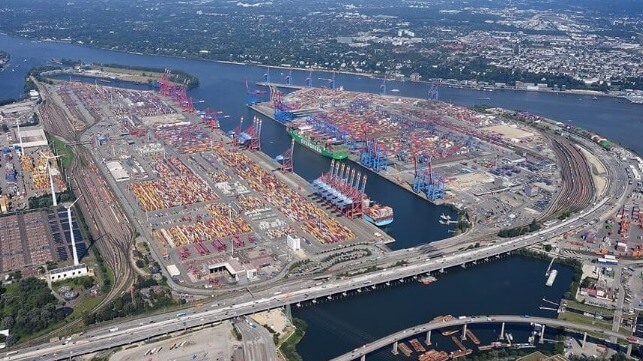German Seaports Eye Defense Funding to Build Infrastructure

As Europe ramps up funding for its defense, German ports want to see some of the new resources used to strengthen transport infrastructure against potential military attacks. In a recent letter to the German Defense Minister Boris Pistorius, the Central Association of German Seaport Operators (ZDS) emphasized that ports form the first line of attack in a war scenario. In addition, ports are critical in military deployment. In an emergency, materials and soldiers of the German military and NATO partners would have to be moved through seaports.
ZDS estimates that an initial $3.5 billion is needed to ready German ports for wartime emergencies. “We must prepare for this, even if we hope that it never comes to a real emergency. History has taught us this,” said ZDS. The funding should be part of the defense budget and utilized to secure vulnerable port areas and associated infrastructure. These include quay walls, cyber systems and railway facilities. ZDS recommended a dual-use approach for the funding, catering for both civilian and military needs.
Germany’s defense budget is poised to more than double until 2029, from about $72 billion in 2025 to more than $177 billion in the next four years. Part of the funds are earmarked for expanding transport infrastructure, especially roads and railways that are already considered as militarily relevant. With the ZDS proposal, the funding would also be extended to ports. Some of Germany’s most important seaports by cargo throughput include Hamburg, Bremerhaven, Wilhelmshaven and Rostock.
Since Russia invaded Ukraine in 2022, Germany has responded by strengthening the capabilities of its military. This has meant defense preparations for potential Russian aggression. This week, German media carried reports that the federal government is finalizing a military railway system to support NATO’s eastern flank. The exercise includes mapping critical infrastructure sites that would be prioritized in case of an attack.
Separately, ZDS has also been highlighting the aging port infrastructure in Germany. New climate regulations and shifts in global trade are putting pressure on the shipping industry to transform. Unfortunately, the financing availed to ports in Germany has been criticized as insufficient for any meaningful development, and ZDS says that the needs come to about $17 billion. Currently, the federal government pays the states around $45 million annually for seaports. However, there have been some milestones, with the federal government last month announcing $467 million in funding to ports. The investment will go into modernization and building infrastructure for green shipping.
Top image: Carsten Steger / CC BY SA 4.0
